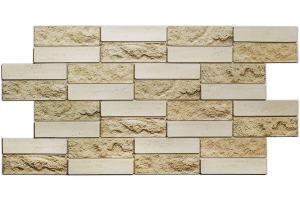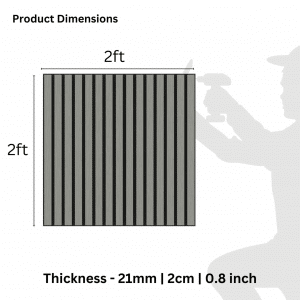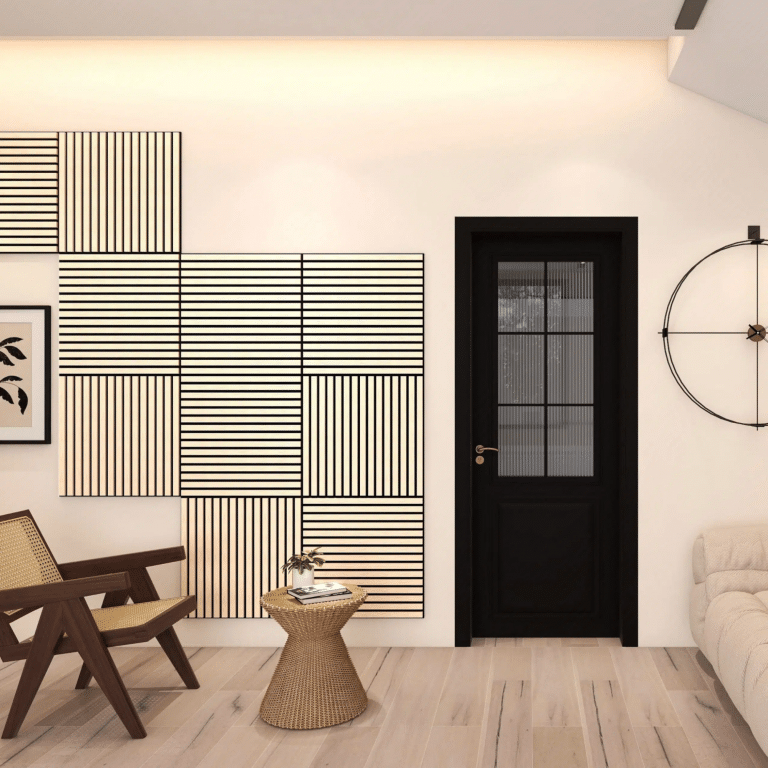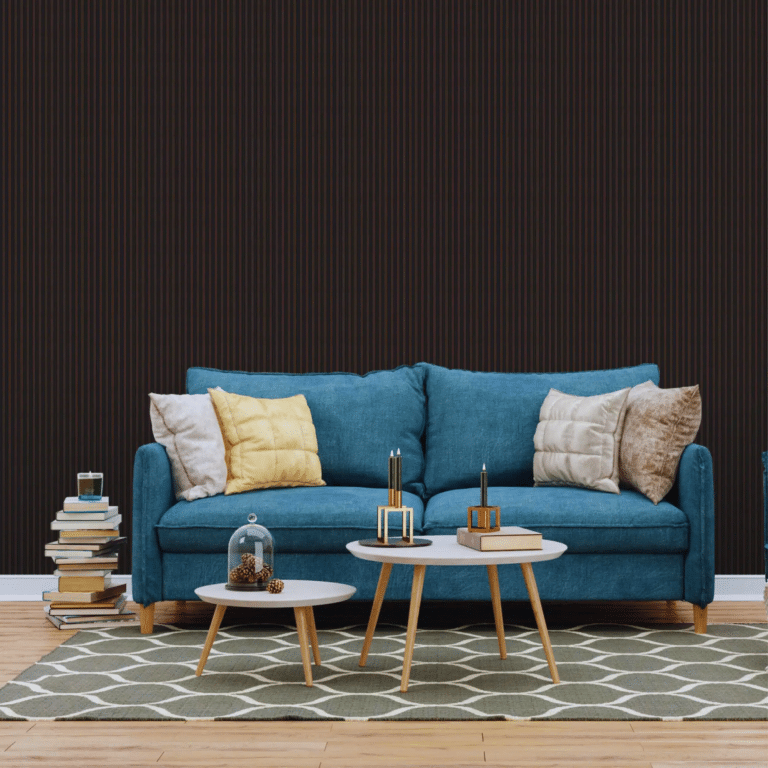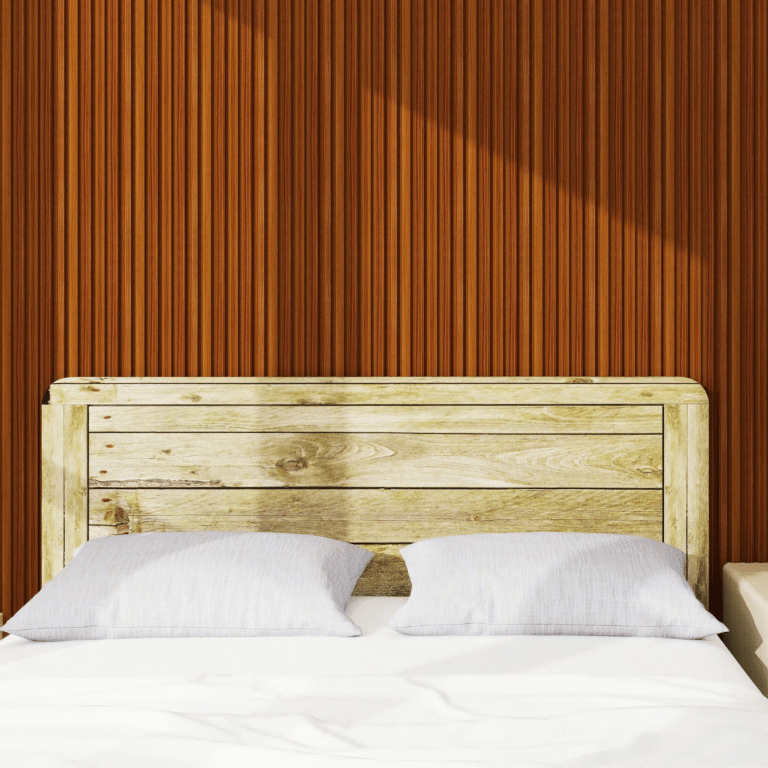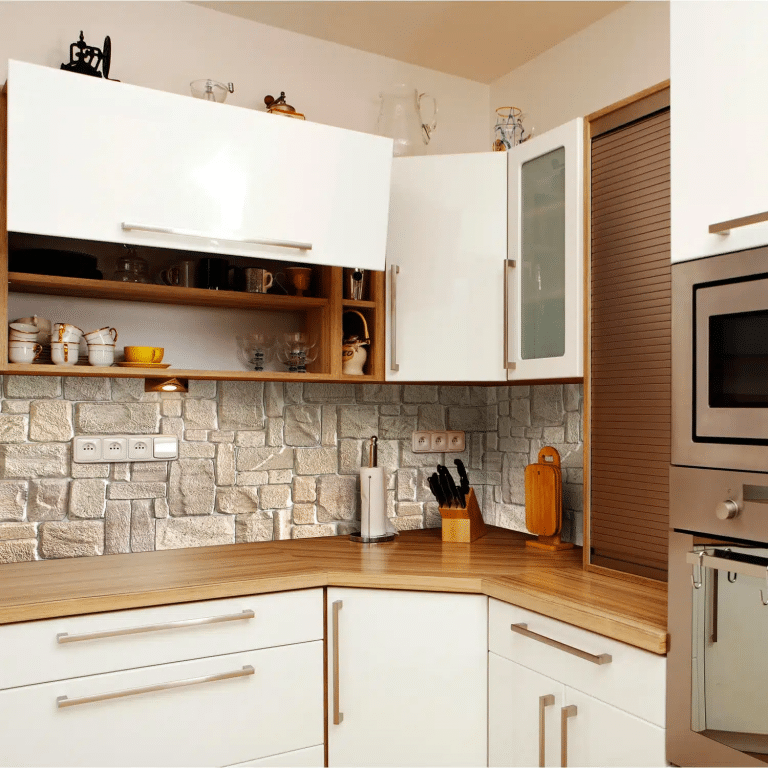No products in the cart.
Home > PVC vs Wood Slat 3D Wall Panels: Pros and Cons
PVC vs Wood Slat 3D Wall Panels: Pros and Cons
- May 15, 2025
- 9:44 pm
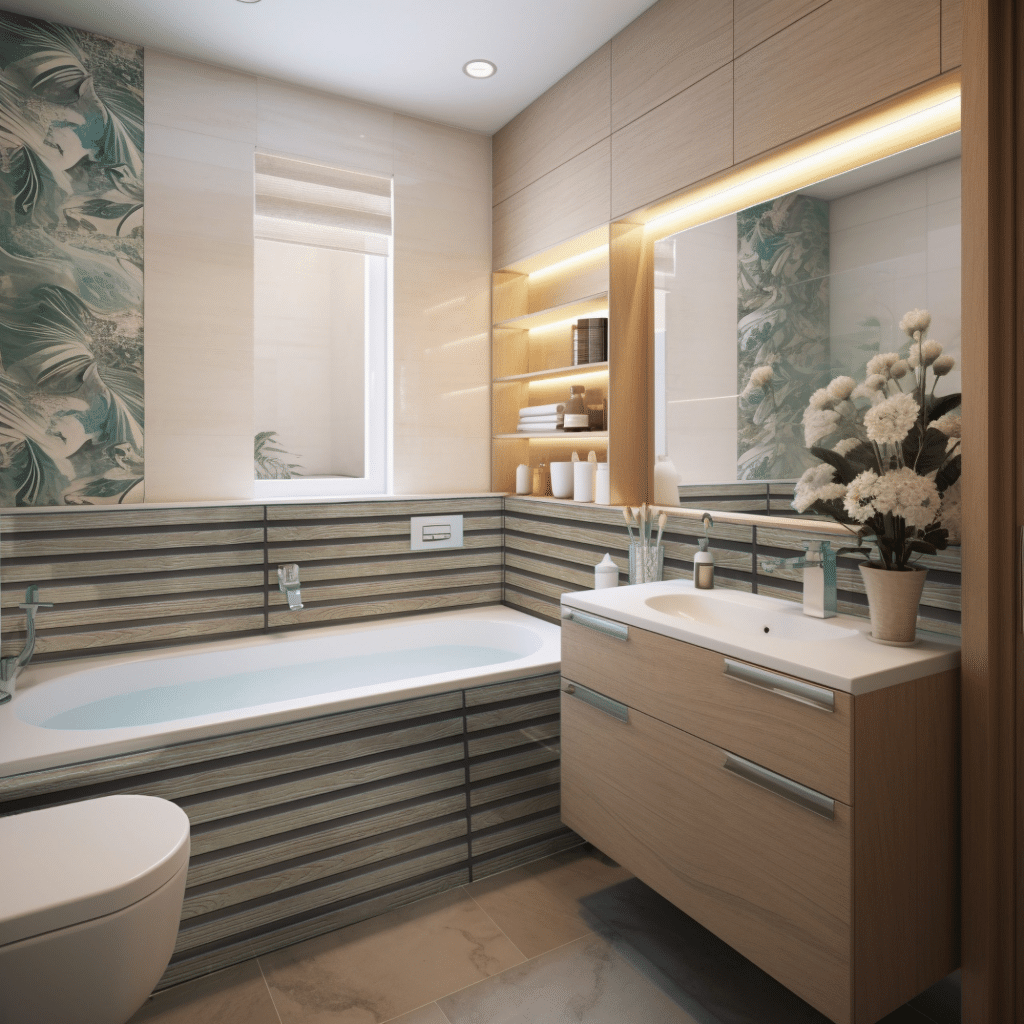
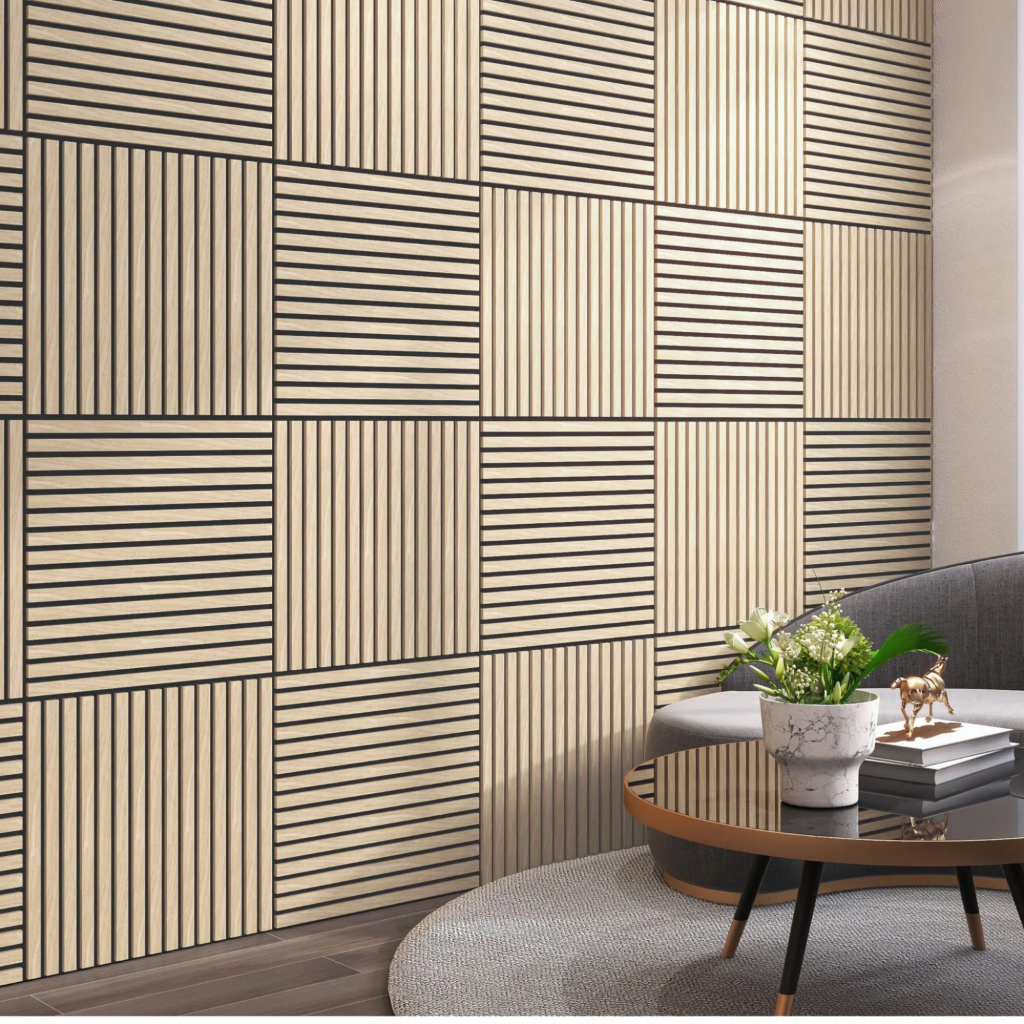
Whether you’re renovating an entire room or upgrading a single focal point, 3D wall panels add depth, texture, and character to interior spaces. Among the most popular choices today are PVC and wood slat 3D wall panels—but how do they compare?
If you’re unsure whether to choose PVC vs wood 3D wall panels, this guide outlines the key differences between these two architectural decorating materials so you can select the best panel style for your renovation project.
What Are 3D Wall Panels?
3D wall panels are decorative materials used to create textured, raised surfaces that bring visual interest and geometric designs to blank or uneven walls. From modern bedrooms to full house design makeovers, they’re versatile design elements used to enhance any interior decoration theme.
Depending on material composition, they range from sleek and synthetic finishes to warm, traditional wood applications. Let’s take a closer look at the two most in-demand types: PVC and wooden panels.
Beige Faux Brick PVC 3D Wall Panel
Understanding the Materials
Choosing the right material for your 3D wall panels can significantly influence the aesthetic and functionality of your interior spaces. Understanding the properties of each option ensures you make an informed decision tailored to your specific needs.
What Are PVC Wall Panels?
PVC (Polyvinyl Chloride) wall panels are made from lightweight, water-resistant plastic. These 3D PVC wall panels are molded into various styles—flat panel, beadboard, or geometric shapes—and are often used for damp or high-humidity spaces like bathrooms or basements.
- Common Features: Moisture resistance, smooth surface, minimal maintenance
- Best For: Wet environments, curved surfaces, budget-friendly remodels
Their versatility and affordability make PVC panels an attractive choice for practical and aesthetically pleasing updates, especially where moisture is a concern.
What Are Wood Slat Wall Panels?
Wood slat panels (or wood wall panels) use natural wood, reclaimed wood, MDF panels, or pressure-treated pine. These panels are popular for their natural warmth, timeless appeal, and capacity to add architectural detail to interior spaces.
- Common Features: Intricate designs, natural beauty, structural integrity
- Best For: Living spaces, modern bedrooms, accent or focal point walls
Wood slat panels bring elegance and depth, serving as a perfect choice for creating cozy, inviting atmospheres that highlight both modern and traditional decor.
Interior Design Tip: Match materials to mood. PVC feels sleek and modern. Wood brings warmth and nature. Let your material choice reflect your room’s desired vibe. |
Key Differences
To choose between PVC and wood 3D wall panels, it’s important to understand their unique features and benefits. This table highlights key differences to help you make an informed decision based on your specific needs.
|
Feature |
PVC Panels |
Wood Panels |
|
Durability |
Moisture-resistant and dent-resistant |
Requires regular maintenance |
|
Visual Appeal |
Clean lines and modern finish |
Natural warmth, grain detail |
|
Installation |
Lightweight and easier DIY-friendly |
Professional installation recommended |
|
Maintenance |
Require minimal maintenance |
Requires more maintenance (wood putty, mineral oil solutions) |
|
Environmental Impact |
Often made with recycled materials |
Only eco-friendly if reclaimed or FSC-certified |
|
Cost |
More budget-friendly |
Premium materials carry a heftier price tag |
|
Suitability for Wet Areas |
Excellent for wet environments |
Not recommended unless pressure-treated or sealed |
|
Design Styles |
Suits minimalist aesthetic and geometric patterns |
Great for beadboard style, batten, and classic looks |
Both PVC and wood panels offer distinct advantages, contributing to the overall style and functionality of your space. By balancing these factors, you can create beautiful and practical interiors.
Pros and Cons of PVC Wall Panels
PVC wall panels offer a practical solution for adding modern flair to interiors, especially in moisture-prone areas, but they may not provide the same warmth and environmental friendliness as natural materials. Carefully consider their placement and style to ensure they enhance your design vision.
Pros:
- Excellent moisture resistance, ideal for wet environments
- Affordable and made from pvc materials or polyurethane layer
- Lightweight and easy to install, especially on curved surfaces or uneven walls
- Require minimal maintenance—just use a damp cloth or soft cleaner
- Comes in a vast array of 3D designs adding a sleek touch
Cons:
- May lack the warmth and aesthetic appeal of real wood
- Less eco-friendly unless made from recycled materials
- Can appear synthetic in traditional or natural-themed interiors
- Less durable in high-traffic areas compared to quality wooden panels
These panels can be a cost-effective choice, but they must weigh the aesthetic and environmental considerations if they align with a natural or eco-friendly design ethos.
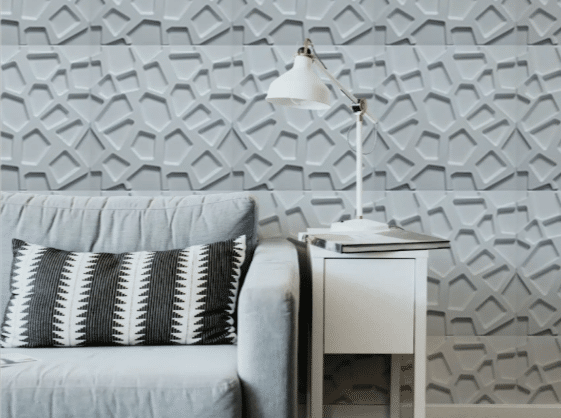
Pros and Cons of Wood Slat 3D Wall Panels
Wood slat 3D wall panels deliver timeless elegance and depth, adding both natural beauty and a luxurious touch to your spaces. However, the initial investment and maintenance may be factors to consider for budget-conscious or low-maintenance needs.
Pros:
- Offers unmatched natural beauty and timeless appeal
- Made from premium materials such as solid wood or reclaimed wood
- Adds pronounced visual interest and acts as a focal point
- Excellent for interior spaces needing a warm, grounded element
- Suits both classic and modern households depending on finish and format
Cons:
- Usually requires professional installation for long-lasting results
- More maintenance is needed—touch-ups with wood putty, sealants, or finishes
- Sensitive to moisture and may absorb heat, causing warping if untreated
- May not suit all budgets due to expensive materials and labor
These panels blend sophistication and versatility, perfect for creating impactful interiors, provided you manage the costs and care required for their upkeep.
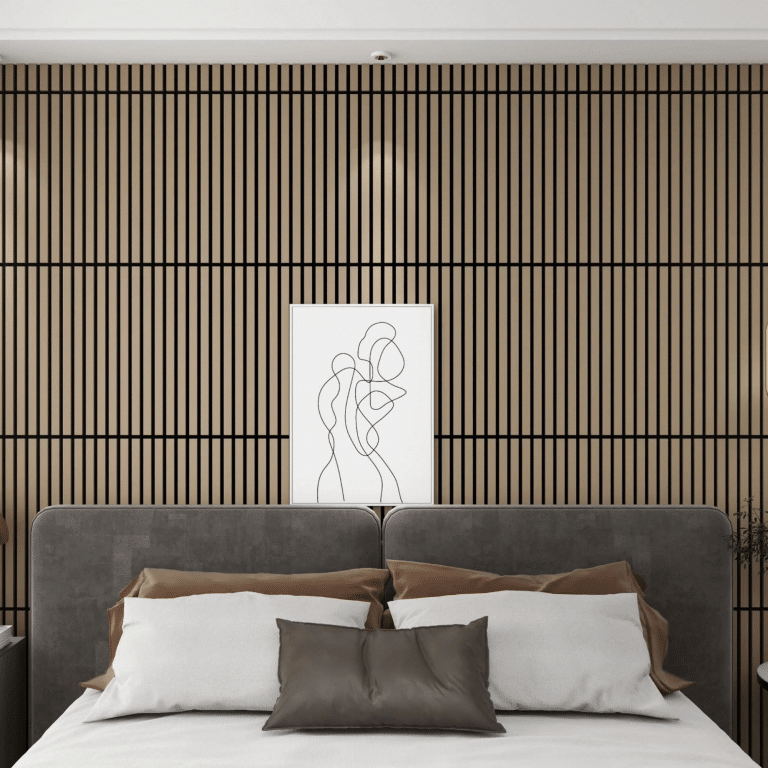
|
Interior Design Tip: Compare texture impact. PVC panels offer clean lines and uniformity. Wood slats bring variation and organic movement. Each adds depth in its own way. |
Installation Insights
Successfully installing wall panels sets the foundation for their visual and functional impact, with each material offering distinct requirements and benefits.
PVC Panels Require:
- J edge trim or F edge trim
- Adhesives or screws depending on wall type
- Cutting flexibility makes installation on curved surfaces seamless
- Ideal for DIY projects due to their lightweight composition
Wooden Wall Panels:
- Require cutting, sanding, and precise spacing
- Best applied with adhesive and finishing nails
- May need edge alignment, staining, or oil applications
- Installation on window frames, corners, or entire rooms can be labor-intensive
Whether you go DIY or opt for professional installation, be sure to prep your walls by cleaning, leveling, and drying them thoroughly.
Acoustic Panels, Wooden Slats for Decor and Noise Reduction
Maintenance & Cleaning
Proper maintenance is key to preserving the appearance and longevity of wall panels, ensuring they continue to enhance your spaces seamlessly.
PVC Panels:
- Use a damp cloth or sponge for regular cleaning
- Avoid abrasive cleaning tools
- Maintain color and shape easily over time
Wood Panels:
- Use cloth with mineral oil solutions or dry wipe with soft brushes
- May require regular maintenance like buffing, filling gaps with wood putty, or re-oiling
- Avoid harsh chemicals that may strip natural finishes or degrade natural wood
Regular care tailored to each panel type will keep your walls looking their best and extend their lifespan. By following these simple guidelines, you can enjoy the enduring beauty and functionality of your 3D wall panels for years to come.
|
Interior Design Tip: Know your sustainability goals. Wood can be responsibly sourced and renewable. PVC is durable and recyclable. Both have eco implications depending on your priorities. |
Which One Should You Choose?
The final decision between PVC and wood 3D wall panels depends on your budget, layout, and design preferences. If your goal is a low-maintenance, moisture-resistant design with a modern or minimalist aesthetic, a PVC wall panel is your best bet. However, if you’re going for natural warmth, and authentic texture, wood wall panels deliver unmatched style.
For large-scale wall panel renovations or complete interior decoration overhauls, consider blending both: wood for feature walls in dry zones, and PVC for practical surfaces in bathrooms or kitchens. The right combination of material composition, panel style, and room function will elevate your interior design while aligning with your lifestyle.
Craft Your Statement with 3D Wall Panels
Whether you prefer the sleek precision of PVC or the organic charm of wood, our 3D wall panels at Dundee Deco offer the most versatile design elements for your contemporary interiors. From flat panel to raised panel styles, geometric patterns to beadboard-inspired slats—there’s a style, texture, and material to match every vision.
Don’t just decorate—create statement walls that reflect your unique style and elevate your spaces using the right architectural decorating materials.
Related Posts
Acoustic 3D Wall Panels for Soundproofing
When it comes to creating a stylish, functional, and quiet interior space, acoustic wall panels offer the perfect combination of …
How to Install 3D Wall Panels: A Step-by-Step Guide
Installing 3D wall panels is one of the most effective ways to transform a flat, uninspiring wall into a textured, …
Best 3D Wall Panels for Modern Interiors
Modern interiors thrive on clean lines, textured surfaces, and smart material choices. If you’re looking to enhance plain walls, 3D …
Types of 3D Wall Panels: Materials and Designs
Looking to bring visual interest and texture to your interior spaces? 3D wall panels are an innovative and stylish solution …

